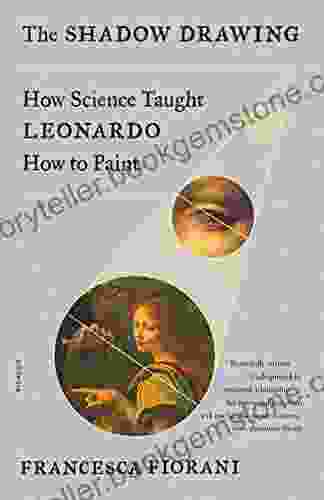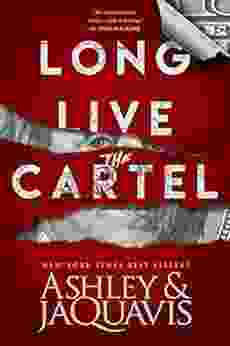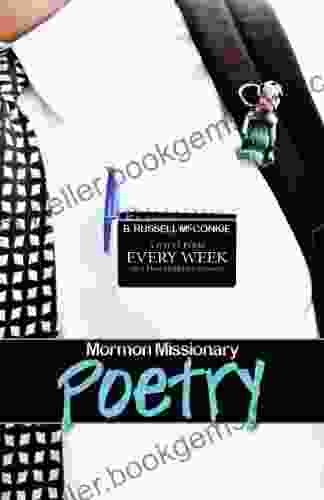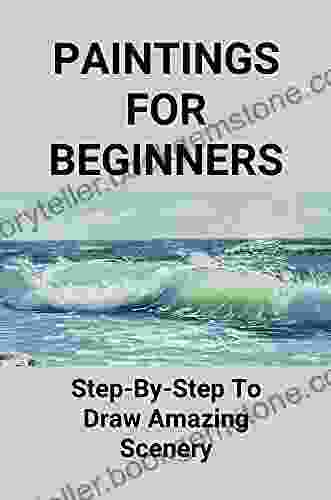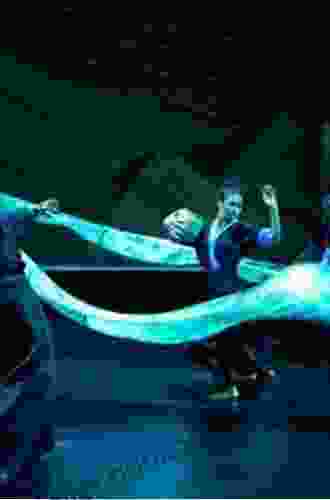How Science Taught Leonardo How to Paint

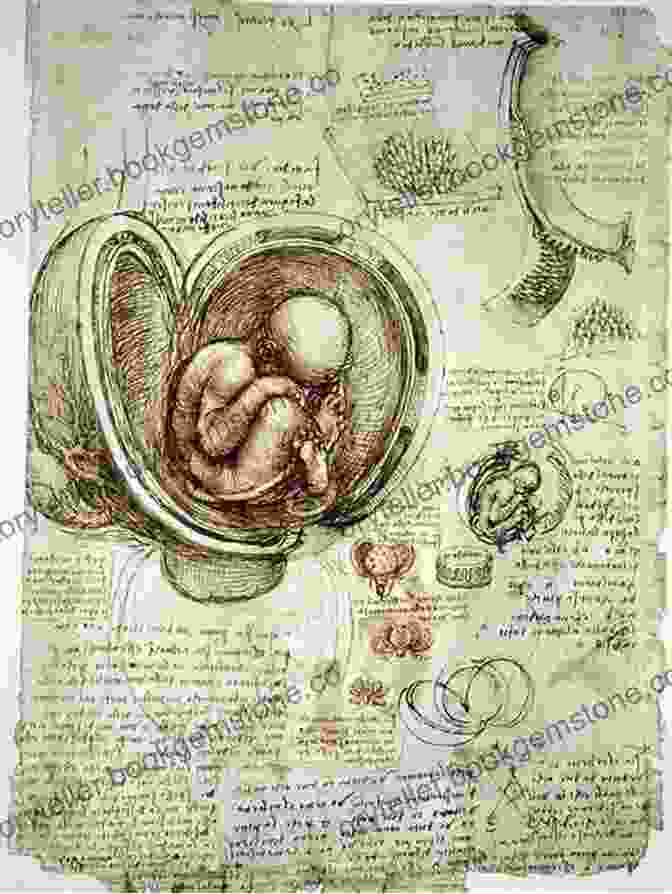
4.5 out of 5
| Language | : | English |
| File size | : | 32974 KB |
| Text-to-Speech | : | Enabled |
| Screen Reader | : | Supported |
| Enhanced typesetting | : | Enabled |
| X-Ray | : | Enabled |
| Word Wise | : | Enabled |
| Print length | : | 385 pages |
Leonardo da Vinci, the enigmatic genius of the Renaissance, was not only an artist but also a brilliant scientist, inventor, and engineer. His insatiable curiosity and relentless pursuit of knowledge extended beyond the realm of art and encompassed the natural world and human anatomy.
This multifaceted approach deeply influenced his artistic practice, resulting in a remarkable blend of artistic excellence and scientific rigor. Leonardo's ability to observe, analyze, and depict the world around him with unparalleled precision and realism set him apart as a master of the Renaissance.
Observing the World with a Scientific Eye
Leonardo's keen observation skills were honed through his scientific studies. He meticulously observed the natural world, sketching plants, animals, and human anatomy with an almost clinical precision. His notebooks are filled with detailed drawings and annotations that reveal his fascination with the mechanics of the human body, the flight of birds, and the movement of water.
This scientific approach to observation informed his artistic technique. Leonardo sought to capture the essence of his subjects, not merely their outward appearance. He studied the underlying structures, muscles, and bones to create paintings that were both anatomically accurate and visually impactful.
The Precision of Anatomical Studies
Leonardo's anatomical studies were particularly influential in his depictions of the human form. He dissected cadavers, meticulously studying the muscles, bones, and organs. This deep understanding of human anatomy allowed him to render figures with an unprecedented realism and sense of movement.
One of the most evident examples of Leonardo's anatomical knowledge is his masterpiece, the "Mona Lisa." Her enigmatic smile and elusive gaze are believed to have been achieved through Leonardo's mastery of sfumato, a technique that creates a soft, gradual transition between colors and tones. This technique allowed Leonardo to capture the subtle nuances of her expression, lending her an almost lifelike quality.
Mastering Perspective and Chiaroscuro
Leonardo's understanding of science and optics also played a crucial role in his use of perspective and chiaroscuro. Perspective allowed him to create the illusion of three-dimensional space on a two-dimensional surface, while chiaroscuro provided him with the tools to render light and shadow, creating depth and drama.
In his painting "The Last Supper," Leonardo masterfully employs perspective to draw the viewer into the scene. The vanishing point, located at the center of the table, creates a sense of depth and recession, emphasizing the importance of Christ at the heart of the composition. The use of chiaroscuro further enhances the drama, casting light upon Christ and his disciples and creating a sense of mystery and awe.
Optical Illusions: Deceiving the Eye
Leonardo's scientific knowledge extended to the realm of optics and human perception. He understood how the eye interprets light and color, and he exploited these principles to create optical illusions and enhance the visual impact of his paintings.
One example of Leonardo's use of optical illusions is his depiction of the angel's wings in his painting "The Virgin of the Rocks." By using a technique known as "sfumato" and creating a gradual transition between the angel's wings and the surrounding landscape, Leonardo makes the wings appear to shimmer and float, adding a sense of ethereal beauty to the scene.
: The Science Behind the Art
Leonardo da Vinci's profound understanding of science and optics revolutionized the art of painting. His keen observation, anatomical studies, and mastery of perspective and chiaroscuro allowed him to create works that transcended mere representation and elevated the art of painting to new heights.
Leonardo's legacy as a master of both art and science continues to inspire and fascinate artists and scientists alike. His ability to bridge the gap between these two disciplines demonstrates the interconnectedness of knowledge and the boundless possibilities that arise when curiosity and innovation collide.
4.5 out of 5
| Language | : | English |
| File size | : | 32974 KB |
| Text-to-Speech | : | Enabled |
| Screen Reader | : | Supported |
| Enhanced typesetting | : | Enabled |
| X-Ray | : | Enabled |
| Word Wise | : | Enabled |
| Print length | : | 385 pages |
Do you want to contribute by writing guest posts on this blog?
Please contact us and send us a resume of previous articles that you have written.
 Best Book
Best Book Page Flip
Page Flip Bookshelf
Bookshelf Literary loom
Literary loom Chapter
Chapter Bookish
Bookish PageTurner
PageTurner Bibliophile
Bibliophile Story
Story Inkwell
Inkwell Bookworm
Bookworm Labyrinth
Labyrinth Plot Twist
Plot Twist Prose
Prose Paperback
Paperback Storyteller
Storyteller Sanctuary
Sanctuary Fiction
Fiction Reading
Reading Chronicle
Chronicle Read
Read Jesse Martin
Jesse Martin Sara Paretsky
Sara Paretsky Colby Buzzell
Colby Buzzell Richard Pikesley
Richard Pikesley Christopher Simmons
Christopher Simmons Christopher Griffin
Christopher Griffin Ari Seth Cohen
Ari Seth Cohen Mark Edward Harris
Mark Edward Harris Karen A Romanko
Karen A Romanko Patricia Williams
Patricia Williams Margaret Scott
Margaret Scott Jennifer Homans
Jennifer Homans Kathy Kolbe
Kathy Kolbe Shugri Said Salh
Shugri Said Salh Tim Z Hernandez
Tim Z Hernandez Arthur Miller
Arthur Miller Mimi Kwa
Mimi Kwa Nnedi Okorafor
Nnedi Okorafor Gloria Mattioni
Gloria Mattioni Ansel Adams
Ansel Adams Beata Lubas
Beata Lubas Anthony Ryder
Anthony Ryder Kris Jenner
Kris Jenner Michael Kimmelman
Michael Kimmelman Axel Hacke
Axel Hacke Pankaj Mishra
Pankaj Mishra Detlev Henschel
Detlev Henschel Avery Grey
Avery Grey Deborah D Douglas
Deborah D Douglas Arthur C Clarke
Arthur C Clarke Kim Knox
Kim Knox Joan Tollifson
Joan Tollifson Anne Richardson Williams
Anne Richardson Williams Charles Taliaferro
Charles Taliaferro John E Siers
John E Siers Karl Ove Knausgaard
Karl Ove Knausgaard Arthur H Buckley
Arthur H Buckley Marina Garone Gravier
Marina Garone Gravier Sarah Crafts
Sarah Crafts Ayn Rand
Ayn Rand Michael Frank
Michael Frank Anne Frank
Anne Frank Koji A Dae
Koji A Dae Anthony J Melchiorri
Anthony J Melchiorri Annette Dozier
Annette Dozier Jonathan Strahan
Jonathan Strahan Zalmay Khalilzad
Zalmay Khalilzad Angela Y Davis
Angela Y Davis Zeneba Bowers
Zeneba Bowers Stephen Moss
Stephen Moss Marlene Wagman Geller
Marlene Wagman Geller Luke Nguyen
Luke Nguyen Marta Mcdowell
Marta Mcdowell Colonial Williamsburg Foundation
Colonial Williamsburg Foundation Annette Freeman
Annette Freeman Jasper T Scott
Jasper T Scott Laura Davis Chanin
Laura Davis Chanin John Izbicki
John Izbicki Bob Mayer
Bob Mayer J R Osborn
J R Osborn Leokadia Schmidt
Leokadia Schmidt Frank Conroy
Frank Conroy John Woolf
John Woolf Annette Kowalski
Annette Kowalski Jason Frye
Jason Frye Elizabeth David
Elizabeth David Gene D Phillips
Gene D Phillips Jaime Castle
Jaime Castle Pat Cadigan
Pat Cadigan Anne Morrow Lindbergh
Anne Morrow Lindbergh Robert V Camuto
Robert V Camuto Asaf Messerer
Asaf Messerer Julie Nelson Davis
Julie Nelson Davis Jay Allan
Jay Allan Jan Murphy
Jan Murphy Asali Solomon
Asali Solomon Arielle Eckstut
Arielle Eckstut Anne Mccaffrey
Anne Mccaffrey Armine Von Tempski
Armine Von Tempski R A Lafferty
R A Lafferty Antoinette Nora Claypoole
Antoinette Nora Claypoole Diana Kupershmit
Diana Kupershmit Atsons
Atsons Scott M Madden
Scott M Madden Scott Lerman
Scott Lerman Myrnoska Scott
Myrnoska Scott Yasmin Angoe
Yasmin Angoe Darby English
Darby English Lou Sutton
Lou Sutton James Rosone
James Rosone Jay Caspian Kang
Jay Caspian Kang James Maskalyk
James Maskalyk Tony Hillerman
Tony Hillerman Ava Archer
Ava Archer Anton Roux
Anton Roux Paul Holt
Paul Holt S H Jucha
S H Jucha Claire Devarrieux
Claire Devarrieux Francesca Fiorani
Francesca Fiorani Bernadette Murphy
Bernadette Murphy Cathy Curtis
Cathy Curtis Stewart James
Stewart James Sheila O Flanagan
Sheila O Flanagan Caroline Montague
Caroline Montague Sue Miller
Sue Miller Dennic Chunman Lo
Dennic Chunman Lo Nick Cole
Nick Cole Nancy Nicholson
Nancy Nicholson Kindle Edition
Kindle Edition Arleta Pech
Arleta Pech Peter Jazwinski
Peter Jazwinski Yuk Hui
Yuk Hui Kao Kalia Yang
Kao Kalia Yang Berlitz Publishing
Berlitz Publishing Michael Fleishman
Michael Fleishman John Davidson
John Davidson Lena Grey
Lena Grey Ursa Dax
Ursa Dax Anton Hager
Anton Hager David Larocca
David Larocca Sadhna Shanker
Sadhna Shanker Annemarie Bean
Annemarie Bean Pearl Howie
Pearl Howie Eric Warren
Eric Warren Aziz Shihab
Aziz Shihab Beverly Galeskas
Beverly Galeskas John Scarne
John Scarne George Bird Grinnell
George Bird Grinnell Joe Russo
Joe Russo George Rathmell
George Rathmell Pico Iyer
Pico Iyer Franklin Horton
Franklin Horton Peter Turchi
Peter Turchi Jason Waguespack
Jason Waguespack Christopher Sieving
Christopher Sieving Avanti Centrae
Avanti Centrae Joan Baxter
Joan Baxter Wakefield Poole
Wakefield Poole Pat Hall
Pat Hall Ken Seeroi
Ken Seeroi Jt Sawyer
Jt Sawyer Thomas M Hill
Thomas M Hill Artemisia Gentileschi
Artemisia Gentileschi Debbie Macomber
Debbie Macomber Sonia Misra
Sonia Misra Peter James West
Peter James West Mary Kay Ricks
Mary Kay Ricks Lian Hearn
Lian Hearn Mary Maccracken
Mary Maccracken Tara Wells
Tara Wells Phil Doran
Phil Doran Anthea Sharp
Anthea Sharp Laurence Oliphant
Laurence Oliphant Anton Chekhov
Anton Chekhov Elizabeth Friendship
Elizabeth Friendship Lizzie Williams
Lizzie Williams Martin Cruz Smith
Martin Cruz Smith Antonis Tsagaris
Antonis Tsagaris Robert Graysmith
Robert Graysmith Arne Dehli
Arne Dehli Suzanne Fredericq
Suzanne Fredericq Ashley Mahlberg
Ashley Mahlberg Talia Beckett
Talia Beckett Kim Erwin
Kim Erwin Edward Achorn
Edward Achorn Vladimir London
Vladimir London Ashley Brantley
Ashley Brantley Gail Morin
Gail Morin Hannah Arendt
Hannah Arendt Karen Mccartney
Karen Mccartney Tia Williams
Tia Williams Eileen Mcnamara
Eileen Mcnamara Katja Pantzar
Katja Pantzar Jan Cohen Cruz
Jan Cohen Cruz Shonda Buchanan
Shonda Buchanan Paul Brinkley Rogers
Paul Brinkley Rogers Blackhorse Mitchell
Blackhorse Mitchell Annemieke Mein
Annemieke Mein Wesley B Turner
Wesley B Turner Emma Read
Emma Read Fig Taylor
Fig Taylor Kirsten Anderson
Kirsten Anderson Jane Sullivan
Jane Sullivan Barbara Demarco Barrett
Barbara Demarco Barrett Nathan Deuel
Nathan Deuel Anne Hillerman
Anne Hillerman Prenisha Aja
Prenisha Aja Jim Steinmeyer
Jim Steinmeyer Peter Watts
Peter Watts Arrigo Cipriani
Arrigo Cipriani Clive Hallett
Clive Hallett Anwei Skinsnes Law
Anwei Skinsnes Law Anthony M Strong
Anthony M Strong Jodi Ohl
Jodi Ohl Elena M Watson
Elena M Watson Carolyn Jenkins
Carolyn Jenkins Robert J Serling
Robert J Serling Juliette Sobanet
Juliette Sobanet Howling Moon Books
Howling Moon Books Stephan Talty
Stephan Talty Edgar Rice Burroughs
Edgar Rice Burroughs Antony Kamm
Antony Kamm Bella Martin
Bella Martin Scott Hughey
Scott Hughey Jane Monteith
Jane Monteith Samantha Hahn
Samantha Hahn Laurel Ann Francis
Laurel Ann Francis Jay Boyce
Jay Boyce D Levesque
D Levesque Chloe Fox
Chloe Fox Kristen Ashley
Kristen Ashley Benjamin Percy
Benjamin Percy S C Jensen
S C Jensen Todd Barry
Todd Barry Morgan Rogers
Morgan Rogers Carne Griffiths
Carne Griffiths Donald Murray
Donald Murray Magi Nams
Magi Nams Peter F Hamilton
Peter F Hamilton Eugenio Barba
Eugenio Barba Quentin Tarantino
Quentin Tarantino Ar Corbin
Ar Corbin Apsley Cherry Garrard
Apsley Cherry Garrard Jane Yolen
Jane Yolen Anne Green Gilbert
Anne Green Gilbert Saeed Jones
Saeed Jones John H Clark Iii
John H Clark Iii Mackinley Helm
Mackinley Helm Rob Schmitz
Rob Schmitz Michael Tucker
Michael Tucker Anne Manera
Anne Manera Brian W Smith
Brian W Smith George Huppert
George Huppert Rebecca Kaye
Rebecca Kaye Joseph Birchall
Joseph Birchall M N Forgy
M N Forgy King Ellie
King Ellie T R Todd
T R Todd Valerie Mckeehan
Valerie Mckeehan Hanife Hassan O Keeffe
Hanife Hassan O Keeffe Anne De Courcy
Anne De Courcy Oscar Zeta Acosta
Oscar Zeta Acosta Tracy Birdsall
Tracy Birdsall Ashley Bristowe
Ashley Bristowe H Dolmetsch
H Dolmetsch Joseph Wambaugh
Joseph Wambaugh Annie Ernaux
Annie Ernaux Asimina Nteliou
Asimina Nteliou Arielle Silverman Ph D
Arielle Silverman Ph D Lonely Planet
Lonely Planet Chris Cozen
Chris Cozen Austin Channing Brown
Austin Channing Brown Meyer Berger
Meyer Berger Anthony Ryan
Anthony Ryan Linda Furiya
Linda Furiya Elise Darcy
Elise Darcy Annette Insdorf
Annette Insdorf Maxine Leeds Craig
Maxine Leeds Craig Tamar Diana Wilson
Tamar Diana Wilson W A Bentley
W A Bentley Madeleine Walker
Madeleine Walker Ashleynicole
Ashleynicole Patrick Rothfuss
Patrick Rothfuss Tim Downs
Tim Downs Armin Weber
Armin Weber Maria Venegas
Maria Venegas Paul Steinberg
Paul Steinberg Oliver Mayes
Oliver Mayes W Michael Blumenthal
W Michael Blumenthal Michael Betancourt
Michael Betancourt Davida Schulman
Davida Schulman Ernst Lehner
Ernst Lehner Ashlee Vance
Ashlee Vance Gayatri Gopinath
Gayatri Gopinath Doug Scott
Doug Scott Philip Tyler
Philip Tyler Scott Westerfeld
Scott Westerfeld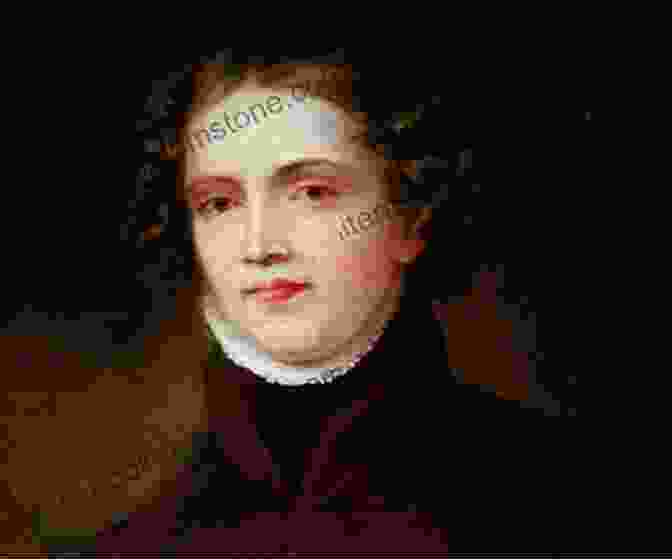 Anne Lister
Anne Lister Riva Lehrer
Riva Lehrer Chris Saper
Chris Saper Tracy Franz
Tracy Franz Wade Motawi
Wade Motawi Satyajit Ray
Satyajit Ray Fergal Keane
Fergal Keane Nancy Lee Mccaskill
Nancy Lee Mccaskill Arnold Rampersad
Arnold Rampersad B V Larson
B V Larson Approach Guides
Approach Guides Anthony David
Anthony David Anne Rice
Anne Rice Keller Easterling
Keller Easterling Maureen T Corrigan
Maureen T Corrigan B Ruby Rich
B Ruby Rich Jan Morris
Jan Morris Tamron Hall
Tamron Hall Lorna Luft
Lorna Luft Annemarie Strehl
Annemarie Strehl Anthony Slide
Anthony Slide Robert Beverly Hale
Robert Beverly Hale Billy Connolly
Billy Connolly Tony Randgaard
Tony Randgaard Chawadee Nualkhair
Chawadee Nualkhair Nicole Casey
Nicole Casey Dave Bartell
Dave Bartell Rivers Solomon
Rivers Solomon Anton Tekshin
Anton Tekshin Anthony James
Anthony James Jeffrey Vonk
Jeffrey Vonk Ashley Jaquavis
Ashley Jaquavis Avery Blake
Avery Blake B Russell Mcconkie
B Russell Mcconkie Tay Mo Nae
Tay Mo Nae Pamela Des Barres
Pamela Des Barres Kalyn Franke
Kalyn Franke Michael Jan Friedman
Michael Jan Friedman Arlo Adams
Arlo Adams Fifi O Neill
Fifi O Neill Arthur Murray
Arthur Murray Tim Gunn
Tim Gunn Chris A Norton
Chris A Norton Geoff Schumacher
Geoff Schumacher Lorraine Caputo
Lorraine Caputo John A Crespi
John A Crespi Julian Stallabrass
Julian Stallabrass Gina Rossi Armfield
Gina Rossi Armfield Richard Killeen
Richard Killeen David Deal
David Deal Clare Therese Gray
Clare Therese Gray Owen Jones
Owen Jones Linda Nagata
Linda Nagata Ariel Dorfman
Ariel Dorfman Janet Farnsworth
Janet Farnsworth Aubrey A Jones
Aubrey A Jones Catherine E Mckinley
Catherine E Mckinley Joan Bess
Joan Bess Steven M Nolt
Steven M Nolt Kevin Mannens
Kevin Mannens David E Stannard
David E Stannard Arthur Conan Doyle
Arthur Conan Doyle Matthew A Goodwin
Matthew A Goodwin Lydia Wilen
Lydia Wilen Olive Collins
Olive Collins Edgar Degas
Edgar Degas Lutishia Lovely
Lutishia Lovely Mary Renault
Mary Renault Martin Kemp
Martin Kemp Ariana Godoy
Ariana Godoy John Triptych
John Triptych Matthew Jm Carpenter
Matthew Jm Carpenter Kaitlyn Greenidge
Kaitlyn Greenidge Jacqueline Rayner
Jacqueline Rayner David Consuegra
David Consuegra Sarah Winnemucca Hopkins
Sarah Winnemucca Hopkins Art Wolfe
Art Wolfe Betty Reynolds
Betty Reynolds Robert D Kaplan
Robert D Kaplan Brendan Edwards
Brendan Edwards Howard Dully
Howard Dully Graham Fraser
Graham Fraser Kyunghee Pyun
Kyunghee Pyun R G Collingwood
R G Collingwood Heather Vogel Frederick
Heather Vogel Frederick Noy
Noy Rosemary Sullivan
Rosemary Sullivan B B Thatcher
B B Thatcher Ruth Wariner
Ruth Wariner De Andrea
De Andrea Miss Jenesequa
Miss Jenesequa Arthur C Danto
Arthur C Danto Rebecca Keegan
Rebecca Keegan New Edition Kindle Edition
New Edition Kindle Edition Michael Evamy
Michael Evamy John H Groberg
John H Groberg James D Umbach
James D Umbach Annette Gordon Reed
Annette Gordon Reed Joseph Mcbride
Joseph Mcbride Vernor Vinge
Vernor Vinge Rebecca Serle
Rebecca Serle Jose Antonio Salgado Alonso
Jose Antonio Salgado Alonso Binka Le Breton
Binka Le Breton Annie Keary
Annie Keary Xiaolu Guo
Xiaolu Guo Valerie Biden Owens
Valerie Biden Owens Steven Bradley
Steven Bradley Smauggy Universe
Smauggy Universe Bwwm Love
Bwwm Love Anton Treuer
Anton Treuer Blaze Ward
Blaze Ward Woody Allen
Woody Allen Bill White
Bill White Tiffany Roberts
Tiffany Roberts Zharel Anger
Zharel Anger Sarah Vallance
Sarah Vallance Beth Haslam
Beth Haslam Anthony C Winkler
Anthony C Winkler Ashley Antoinette
Ashley Antoinette Destiny Davis
Destiny Davis Dirk Hayhurst
Dirk Hayhurst Pamela Cutter
Pamela Cutter Ron Stocke
Ron Stocke Walt Bachman
Walt Bachman Robert Dugoni
Robert Dugoni Eric Campbell
Eric Campbell Charles Nordhoff
Charles Nordhoff Vanessa Hua
Vanessa Hua Joe Abercrombie
Joe Abercrombie Ashley K Stoyanov Ojeda
Ashley K Stoyanov Ojeda Doug Peterson
Doug Peterson Ashley Fiolek
Ashley Fiolek Jun Maeda
Jun Maeda Obed Silva
Obed Silva Cynthia Winton Henry
Cynthia Winton Henry Haruki Murakami
Haruki Murakami Michael Chatfield
Michael Chatfield Karen Ordahl Kupperman
Karen Ordahl Kupperman Anthony M Amore
Anthony M Amore Carl Stubblefield
Carl Stubblefield Anne Keenan Higgins
Anne Keenan Higgins Ray Bradbury
Ray Bradbury Shami Stovall
Shami Stovall August Wilson
August Wilson Erin Eitter Kono
Erin Eitter Kono Sari Botton
Sari Botton Antonia Fraser
Antonia Fraser Br Kingsolver
Br Kingsolver Colin Angus
Colin Angus N L Hudson
N L Hudson Jean Guerrero
Jean Guerrero Nora Roberts
Nora Roberts Deborah Paris
Deborah Paris Austin Howe
Austin Howe Eric Broudy
Eric Broudy Anne Moody
Anne Moody Margaret Walker
Margaret Walker Bear Heart
Bear Heart Tony Peak
Tony Peak Chris Weyers
Chris Weyers Arthur Bartow
Arthur Bartow Mary Ann Scott
Mary Ann Scott Christine Denniston
Christine Denniston Haben Girma
Haben Girma Doris Marjorie Moore
Doris Marjorie Moore Regina Held
Regina Held Anne Sebba
Anne Sebba Waldo Rodriguez
Waldo Rodriguez Nicholas Sansbury Smith
Nicholas Sansbury Smith Anthony Jones
Anthony Jones Jason Louis
Jason Louis Elizabeth Bard
Elizabeth Bard Mark Baskinger
Mark Baskinger Brian Butko
Brian Butko
Light bulbAdvertise smarter! Our strategic ad space ensures maximum exposure. Reserve your spot today!
 Kurt VonnegutFollow ·17k
Kurt VonnegutFollow ·17k W.H. AudenFollow ·19.2k
W.H. AudenFollow ·19.2k Ken SimmonsFollow ·5.9k
Ken SimmonsFollow ·5.9k Xavier BellFollow ·2.4k
Xavier BellFollow ·2.4k Fernando BellFollow ·10.2k
Fernando BellFollow ·10.2k Logan CoxFollow ·18.7k
Logan CoxFollow ·18.7k Clark CampbellFollow ·9.7k
Clark CampbellFollow ·9.7k Virginia WoolfFollow ·13k
Virginia WoolfFollow ·13k
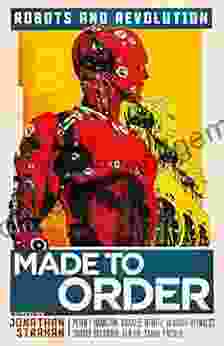
 Braden Ward
Braden WardMade to Order Robots and the Coming Revolution
Robots are becoming increasingly common...
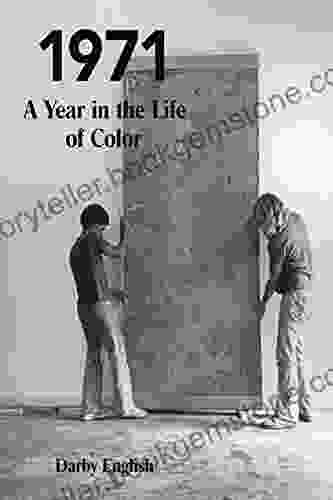
 Clay Powell
Clay Powell1971: A Year in the Life of Color
The year 1971 was a pivotal one for color....
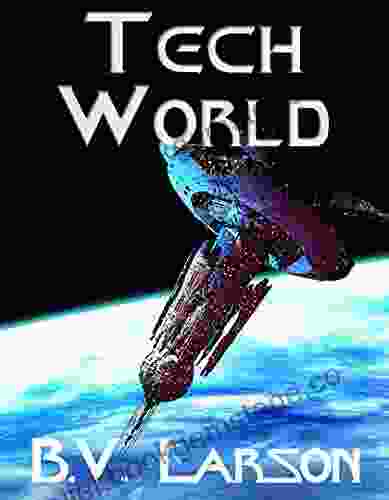
 Ralph Waldo Emerson
Ralph Waldo EmersonTech World's Undying Mercenaries: A Deep Dive into the...
In the ever-evolving landscape of the...

 Wade Cox
Wade CoxThe Ultimate Traveler's Guide to the People, Places, and...
Travel has always been a part of the human...
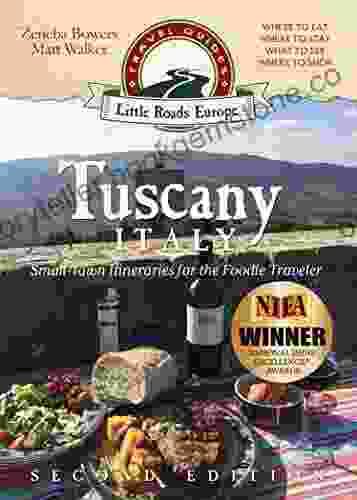
 Evan Simmons
Evan SimmonsA Comprehensive Guide: Uncovering Small Town Culinary...
: A Culinary Odyssey Beyond the City...
4.5 out of 5
| Language | : | English |
| File size | : | 32974 KB |
| Text-to-Speech | : | Enabled |
| Screen Reader | : | Supported |
| Enhanced typesetting | : | Enabled |
| X-Ray | : | Enabled |
| Word Wise | : | Enabled |
| Print length | : | 385 pages |


